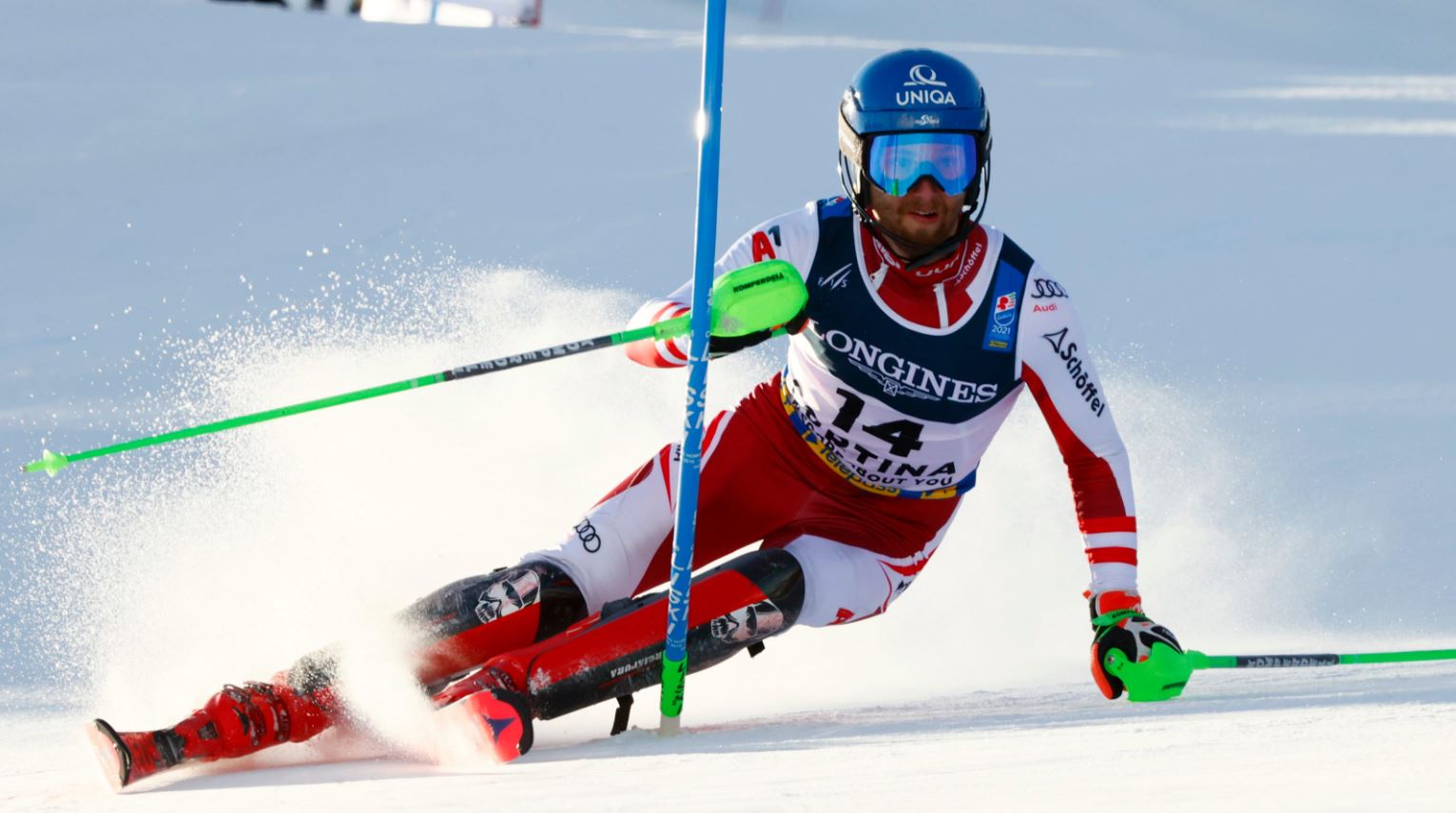The Beijing 2022 Olympic Winter Games takes place from 4 February 2022 to 20 February 2022.
Events will be held in 15 disciplines across seven sports at the Beijing 2022 Games:
I Alpine Skiing (sometimes referred to as downhill skiing) is one of the signature competitions at the Winter Olympics. Competitors regularly reach speeds of up to 152km/h (95mph), all while navigating a winding course full of sharp turns and soaring jumps. Alpine skiing is one of the most physically demanding sports in the Winter Olympic programme, which is arguably reflected in the fact that in the entire history of Alpine skiing at the Winter Games, only five athletes have successfully defended their Olympic crowns across all events in the competition.
II Biathlon – The word “biathlon” comes from the Greek word for “two tests”, and is today seen as the joining of two sports: skiing and shooting. Biathlon made its debut at the 1960 Winter Olympics in Squaw Valley, California, and has been part of the Olympic programme ever since, with new events added to the competition over the years. Each biathlon event is treated as a race, with athletes skiing through a trail whose distance is divided into shooting rounds. Depending on the event, missed shots result in additional time or distance being added to the athlete’s total.
III Bobsleigh – The sled has been used as a mode of transportation for centuries, but the sport of bobsleigh didn’t begin until the late 19th century, when the Swiss attached a steering mechanism to a toboggan. The women’s monobob will be making its Olympic debut in Beijing. Having featured at every Winter Olympics (save one – Squaw Valley 1960), the bobsleigh is an iconic part of the Games. It is one of the three sliding sports on the programme at Beijing 2022, alongside the skeleton and luge.
IV Cross-Country Skiing – Skiers propel themselves either by striding forward (classic style) or side-to-side in a skating motion (skate skiing), aided by arms pushing on ski poles against the snow. Cross-country skiing has been an Olympic sport ever since the first Winter Olympics were held in Chamonix, France in 1924.
V Curling is one of the more unique sports at the Winter Olympics – one that involves stones, brooms, and a ‘slider’ and ‘gripper’ shoe. While curling may be a ‘slow’ sport, it’s still full of skill, suspense and excitement! Curling first originated in the 16th century in Scotland, which makes it one of the oldest team sports in the world.
VI Figure Skating is one of the most popular sports at the Winter Olympics. Figure skating was first contested at the 1908 London Summer Games and again in 1920 in Antwerp before being permanently transferred to the program of the Winter Olympic Games, first held in 1924 in Chamonix, France. At the 2022 Beijing Winter Olympics there are five events in the figure skating competition – men’s individual, women’s individual, pairs, ice dancing and the team event. Each event typically consists of a short and long routine that helps determine a competitor’s score. Within each routine, a skater receives two sets of scores: the technical element score (TES) and the program component score (PCS). The PCS is based primarily on presentation, while the TES evalutes the difficulty and completion of the routine (things like spins and jumps).
VII Freestyle Skiing – After first featuring as a demonstration sport at the 1988 Calgary Games, freestyle skiing was introduced to the Winter Olympic programme in 1992, with new events – including ski cross, halfpipe, and slope-style – added to the competition format over the years. Freestyle skiing first made its debut at the 1988 Calgary Games – albeit only as a demonstration sport, with events for men and women in moguls, aerials, and ballet. Four years later at the Albertville Games, the mogul event gained medal status, as did the aerial event at Lillehammer 1994. Ski cross made its Olympic debut at the 2010 Vancouver Games. Slopestyle and halfpipe were added to the freestyle skiing programme at the 2014 Sochi Games. The aerials events, halfpipe, slopestyle and moguls are all ‘judged’ events – athletes receive a score from a group of judges based on the skill of their tricks and form they display on each of their runs in the competition. In the case of big air, competitors are also scored on the height and distance of each of their jumps. Unlike the other freestyle skiing events, ski cross is a timed event rather than a judged one (the first athlete to cross the finish line wins!)
VII Ice Hockey made its Olympic debut at the 1920 Summer Olympics in Antwerp, but was permanently moved to the Winter Olympic programme in 1924, and has featured at every Winter Games since. The word “hockey” comes from the old French word “hocquet”, meaning “stick”. A women’s tournament was added to the Winter Olympic programme in 1998 at the Nagano Games.
IX Luge is one of the three sliding sports on the programme at the Beijing 2022 Winter Olympics, alongside the skeleton and bobsleigh. It is the fastest of the three, with athletes racing at speeds averaging 120-145 km/h. In the singles competition, athletes compete on the same track, with each rider getting four runs over the course of two days. Those four rides are timed down to the thousandth of a second and the times added together. The athlete with the fastest total time is the winner.
X Nordic Combined is a unique sport, in so far as it’s actually made up of two separate sports: ski jumping and cross-country skiing. The competition has been contested at the Winter Olympics ever since the inaugural Winter Games in 1924, though no women’s events have ever been added to the programme at the Games. The Nordic combined competition at Beijing 2022 will feature three events. All three Nordic combined events consist of a ski jumping competition and a cross-country skiing race. The ‘Gundersen’ refers to the Gundersen Method, which is used to determine a competitor’s starting position for the cross country portion of each event following the ski jumping events, which always come first. Once the jumping points are totalled, they are converted into time penalties. So the winner of the ski jumping would start first in the cross-country, with the other competitions following according to the converted time differences.
XI Short Track Speed Skating is one of the three skating disciplines at the Winter Olympics, alongside figure skating and speed skating. But unlike in speed skating, competitors in short track race against one another – not the clock. As a result, short track races are full of strategy, bravery, skill and high-intensity excitement. But speed skating on a smaller track brought new challenges to skaters, including tighter turns and shorter straightaways. In turn, new techniques and tactics began to evolve for skaters to find success on a shorter track.
XII Skeleton is one of the three sliding sports on the programme at the Beijing 2022 Olympic Winter Games, alongside the luge and bobsleigh. The sport of skeleton has its roots in that most popular of winter pastimes: sleighing. In 1892, a new sledge made entirely of steel was introduced, and some claim that its bony appearance gave the sledge and the sport the name ‘skeleton’.
XIII Ski Jumping has been a key fixture of the Winter Olympics ever since it made its debut at the inaugural Winter Games at Chamonix 1924. In competition, jumps are evaluated by the distance travelled and the style of the jump. The distance is measured along the curve of the landing hill from the takeoff point to the spot where the jumper lands.
XIV Snowboard is one of the newer events on the Winter Olympic programme, having been first included at the 1998 Winter Olympics in Nagano, Japan. But despite having only featured at six editions of the Games, snowboard has become one of the most popular and exciting sports at the Winter Olympics.
XV Speed Skating is one of the three skating disciplines at the Winter Olympics, alongside figure skating and short track speed skating. Speed skating made its Olympic debut at the inaugural Winter Games at Chamonix, France in 1924. However, women were only authorised to compete in the discipline at the Lake Placid Games in 1932, which was then only a demonstration sport. Women’s speed skating was officially included in the Olympic programme at the 1960 Games in Squaw Valley.
The first Winter Olympic Games were held from 25 January to 5 February 1924 in Chamonix, France. The Winter Olympic Games are held once every four years in different cities across the world. Next Winter Olympic Games will take place at Milano Cortina 2026.
Hopefully we will get a lot new olympic champions and can celebrate with them! Sport connects people.
By Katri (the estonian sportgirl)

















